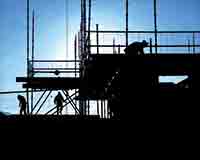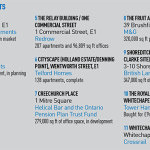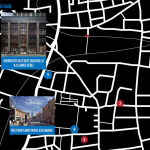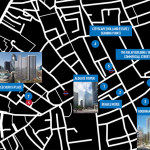In the dark hours of an August night 127 years ago, the body of prostitute Mary Ann Nichols was found in Bucks Row in the sordid slums of London’s East End.
Her throat cut and her body mutilated, her killing marked the start of a reign of terror that gripped the London underworld for the next four months.
More bodies – horrifically disfigured – soon emerged, leading to panic in the streets. The police and vigilante groups looked on helplessly, taunted by a series of mocking letters detailing the killings.
Jack the Ripper, as the murderer came to be known, was never caught, and now, though his identity continues to cause fascination, many of the scenes of his crimes have been covered up by almost 130 years of redevelopment.
But could east London’s recent building boom – spurred by the Olympics, Crossrail and a lack of space in the City – unearth new clues pointing to the killer’s identity?
Buck’s Row, now Durward Street, E1, and the site of the Ripper’s first murder, is just a stone’s throw from the Crossrail excavations at Whitechapel Station – what might they uncover?
Tower Hamlets council has bought the Royal Hospital in Whitechapel, where some of the victims were taken – could the new owners find something lurking in the basement?
Or could perhaps the sleuths at Ashursts, which has signed at M&G’s redevelopment of the Fruit and Wool Exchange, shed some light on the Ripper’s final murder, which happened on its very doorstep?
In all fairness, probably not.
But in the spirit of Halloween, Estates Gazette has put together its own Jack the Ripper tour to look at the shiny new developments rewriting the area’s murky history.
Death to deals
Over the past five years, no one can deny that East London has carved itself a growing foothold in the London market.
As hipsters and office workers now stalk the scenes of gruesome murders, hunting for organic coffee and trendy bars, the price of a new-build residential property has risen to a murderous 1,200 per sq ft, according to EGi London Residential Research.
James Barton, partner, Knight Frank City and east, said that a combination of factors have made the East End such an attractive residential location, with infrastructure, a shift in employment trends, and a sweet spot in terms of pricing all acting in favour of development.
As a result, he said: “The development and prominence of Aldgate and Whitechapel has redefined the boundary of the City residential market. Prices in those areas have gone up by 30% in the past 24 months. That’s why we have dropped the term City fringe. It’s no longer becoming fashionable. It’s established.”
Meanwhile, consensus office rents are a vicious £52.60 per sq ft, with schemes such as the Aldgate Tower, The Relay Building and the Fruit and Wool Exchange either in development or letting fast, luring occupiers into the once-shady streets of the East End.
According to Harry Murphy, associate director at London Unlimited, part of JLL, in terms of offices, the area around Aldgate is where Shoreditch was 10 years ago, and over the next few years it will become as successful.
Demand is being driven, he said, by demographic growth and infrastructure investment, though the snowball effect has been key.
“Looking at what has happened in prime Shoreditch, where rents are arguably as high as City rents, in some ways it has been a victim of its success.
“On the back of how strong rents are, SMEs are questioning where they can go, and the natural progression is Aldgate.”
With Crossrail due for completion by 2018, and thousands of square feet coming online at Stratford, the Royal Docks, Canning Town and Silvertown, the east could continue to murder the competition for years to come, tempting occupiers away from the traditional central markets, and having its wicked way with them.
















